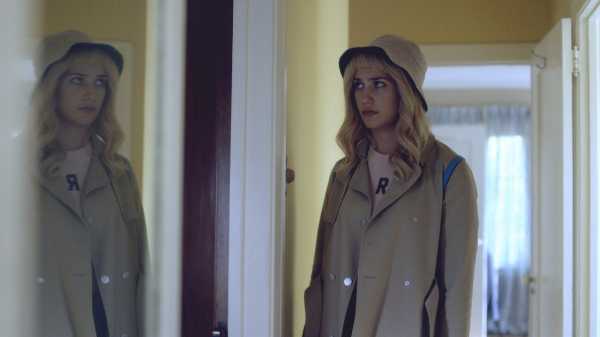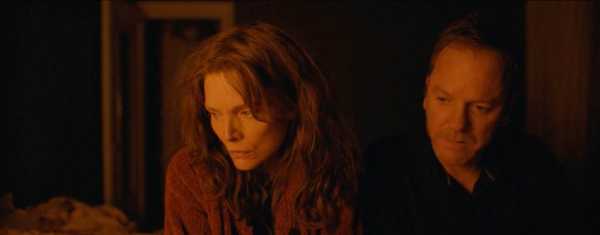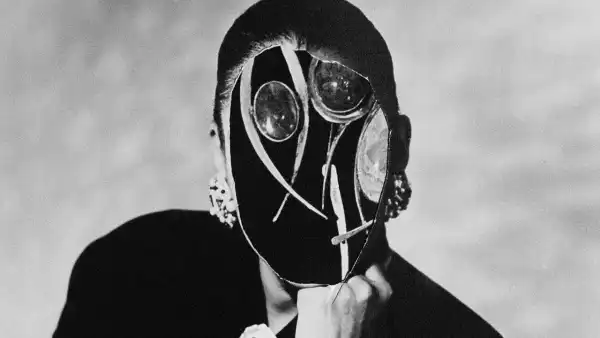
One of the founding events of modern cinema is the writing of a letter to Ingrid Bergman, probably in 1947, at the height of her fame, film Director Roberto Rossellini, expressing her admiration for his films “Open city” and “Paisan”, a fundamental work of the so-called neo-realism, shot largely on location, sometimes almost documentary style, and free to mix professional and nonprofessional actors. Bergman went on to collaborate with Rossellini in “Stromboli”, the first of the five features they made together. She was a star at the age of twenty years, in 1935. In working with Rossellini, it was trading at emo glamorous styles of performance Studio for a more direct, personal mode of acting that did not call for it to meet the dictates of the script, but allowed her closely the character models themselves.
Although the origins of artistic innovation and originality in the films have always been filmmakers, the best of them always showed his originality by expanding, exploring and redefining the art of the actor. Now this is as true as it was seventy years ago, when Bergman and Rossellini worked. That’s what the filmmakers involved in the early inches of the independent-film movement known (and despised and mocked) as mumblecore—which involves, first of all, a cast of mostly nonprofessional or inexperienced actors, whose characters and performance style to fit in closely with their offscreen personal life and bearings—done. That is why mumblecore was the most significant artistic force in cinema of the last decade-plus.
Two features which over the weekend opened, Aaron Katz’s “Gemini” and Lynn Shelton’s “outside,” to show the extent to which ideas mumblecore moved into the art-house mainstream. Moreover, the one that will open on Friday, Andrew Dosunmu,“ where’s Kira?,” which stars Michelle Pfeiffer, follows directly from the same source—the performance of the film is strong and practical realism made at the local and intimate scale. At the same time, all three films offer these practices. At the beginning of the motion, filmmakers to grow with the collective wave of common purpose and shared inspiration. But when pre-movements, the Directors threw back in their own imagination—that’s why many soon fall back into more traditional modes of film and to leave behind the radical spirit of their early days. To maintain a creative career, in order to maintain a state of perpetual revolution; otherwise, as in a trio of new films in his hands—to harden earlier styles and became a habit, a dogma, but a method.
The main value of mumblecore and its tributaries is the recognition that the art of directing is primarily psychological: the relationship of Directors to their films’ substance and style, the complex reflection and self introspection in apparently normal, naturalistic drama. (The most striking success stories of the movement at the moment is Greta gerwig, whose methods are in the “Lady bird”, although not to improvise, to embody the same sense of personal involvement that fueled her early performances in mumblecore films.) It is in the field of psychology directing that “Gemini” is of most interest and where, ultimately, the most disappointing. It is a genre film, a sort of Neo-Noir, and Hollywood, Jill LeBeau (Lola Kirke), personal assistant to the young star, Heather Anderson (Zoe Kravitz), who became the target of paparazzi and repair of impatient fans. More fear for the invasion of her personal life, Heather takes the gun from Jill. After meeting in the Studio, Jill heads to the house of Heather and finds her body, apparently fired from the gun, Jill. The police investigation led by detective Edward An (John Cho), focuses on Jill, who seems to have landed movie-the world is not prepared for this fight like a freshwater fish thrown into the ocean to swim with sharks.
“Gemini” is the directory of the moods and settings of Los Angeles as it is drama; if anything, that depends on the computed conflict of style and content. Work with the operator Andrew reed, Katz embellishes the action with colorful neon lights and moving cameras, automotive gleaming metal and decorative options classic art Deco charm and modern sharp edges smooth. Unfortunately, this form of palettes and single-Toned mood more or less the whole browsing experience. Kirk and Kravitz will bring calm, discreet relax tense actions that their characters are thrown, and their sense of style cast banter is a brand of Katz’s films with his ultra-low-budget movies of decades ago, “dancing USA” and “quiet City”—indicates the action with the thought: the ordinary people who live in highly pressurized and force-permeated the entertainment industry. In fact, the theme of the film is its own puzzling Katz, his sense of himself as a fish in the wrong waters.
Even “Twins” is a movie about movies, which includes no actual films. The film has nothing to say himself about the work, about the work that sets the city, the players and the spectators in motion. Whatever project Heather left, there is nothing to suggest that it is, that reshoots she refuses to do it, no sense that they. This film is about Hollywood, which could produce cars or shoes. In the film about the futile charm of the glossy surface, it never bothers to look under the hood and show you how the engine works, as, apparently, ordinary people living in its production are to the conditions and content of their works. So insecure performance styles to not come off as a reflection on the life and work of artists, but as a directorial affectation.
There is something at work in General less significant “outside.” There, Jay Duplass plays Chris, who for nearly forty years, released from prison after twenty years and returns to his small hometown in Washington state. No, its the closest connection with Carol (Edie Falco), his former high school teacher, who remained in contact with him throughout his detention and worked for his release. The history of his sentence is oozing throughout the movie in a small and rare bit of information. (He took part in an armed robbery; he did not know that his accomplice is his younger brother was armed; he stayed to help the victim, and he took the blame for the crime.) Drama, how much Carol, like Chris, she’s in a troubled marriage, her relationship with Hildy (kaitlyn Dever), her teenage daughter, is rarefied, and then Hildy and Chris embark on a friendship, which throws her family life is still out of order.

“Out Of The Lynn Shelton.”
Photo from the garden / Netflix / Everett
The film is the second level, not a symbolic value; it focuses on their artists so to emphasize their will to perform, and not any particular connection to the characters or, for that matter, to the Director. It’s as if Shelton brings actors together, mostly in twos and threes, for scenes in which, instead of calling “action”, it seems to be called “act”. By thinning the script (which she wrote in collaboration with Duplass) and tie drama on specific and narrow emotional range, Shelton is a very simplicity and clarity of presentation to come off as weird, unfortunately impersonal and calculated—in the drama of the unsaid.
If modern cinema was called Ingrid Bergman’s own self-deglamorization, he finds a new response in the performance of Michelle Pfeiffer in Andrew Dosunmu’s new film, “where’s Kira?” She plays the title character, a woman who returned to Brooklyn from new York, to live with him and care for his ailing mother, Ruth (Suzanne shepherd), in the apartment in the folded part of the city. Kira was unemployed for two years, she was actively looking for work, but bad catches up with her at every step. Its a bit of luck, but a chance encounter with the taxi driver—played by Kiefer Sutherland—who blossoms into romance. When Rue dies, Kira, with low income, at risk of losing the apartment, but Ruth pension and disability benefits continue to arrive, and Kira represents Ruth in order to cash these checks.

Michelle Pfeiffer and keifer Sutherland in Andrew Dosunmu “where’s Kira?”
Photos from a Great moment media / Everett
The originality of “where’s Kira?” not in performances, but in the connection of these representations for visual compositions Dosunmu. Working with the emergency operator Bradford young, Dosunmu basically keeps the camera away from the performers and their static composition rich in sepulchral shade, the light is just Bulb or two, a dim and distant glow of daylight, or light leaks inside the night streets. Each piece is almost a painting in itself, and Dosunmu holds them on the screen in extended takes, providing a sort of stage for artists that often push deep into the dark or cornered in a contrasting moments.
These works, despite their suggestiveness, the actuator of theatre and cinema in the corner. The script, Darcy Pico, similar to the “outside” relatively meager sense of the information and the minimum value of its characters. Thin text, located in long takes, drawn at the pace of a funeral slowness, as if to emphasize the expressive value of the lackluster dialogue, the weight of silence, the grief heavy in the center of the film. The images, with their dim lighting and their stolidity, would seem to dictate, and to strengthen execution style that seems designed to allow it to display the actors, above all, their severity and determination. Rather than developing the character of Kira, experience and surroundings to Lend Pfeiffer a wide range of emotions and ideas to explore in the movie plays like a showcase how deglamorized the reinforcement of star power.
Sourse: newyorker.com






